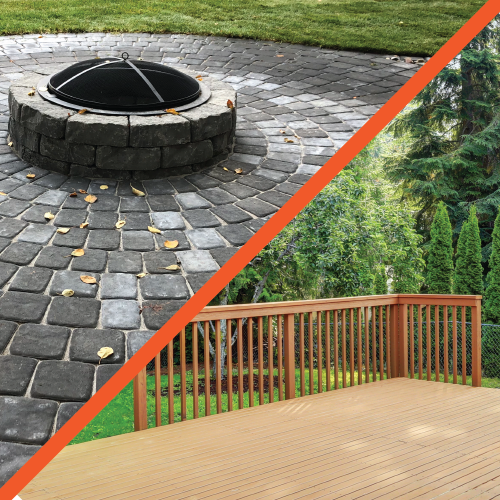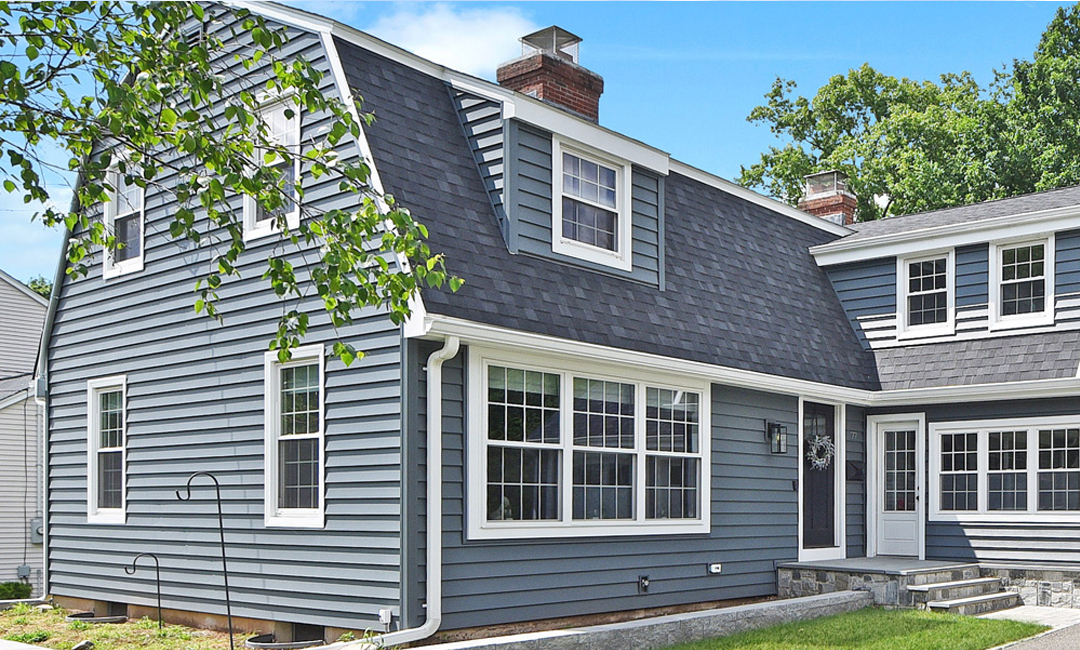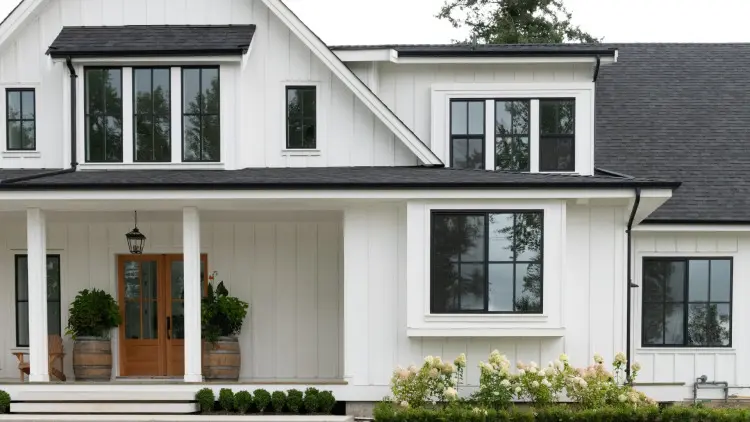This question is one that I wish I didn’t have to answer; one I shouldn’t have to answer, but unfortunately, here I sit, argument and evidence in hand. The Short answer is “yes, absolutely and unequivocally, you should strip the old siding every single time.” And here, my friends, is the long answer:
Water Damage
There are myriad reasons why one should rip old siding before starting new siding, but the first and foremost of these is water damage. I cannot tell you how many housing horror movie scenes we have encountered when siding a house, some caused by previous contractors, some covered by them, but all were insidious detriments to the value and safety of the home.
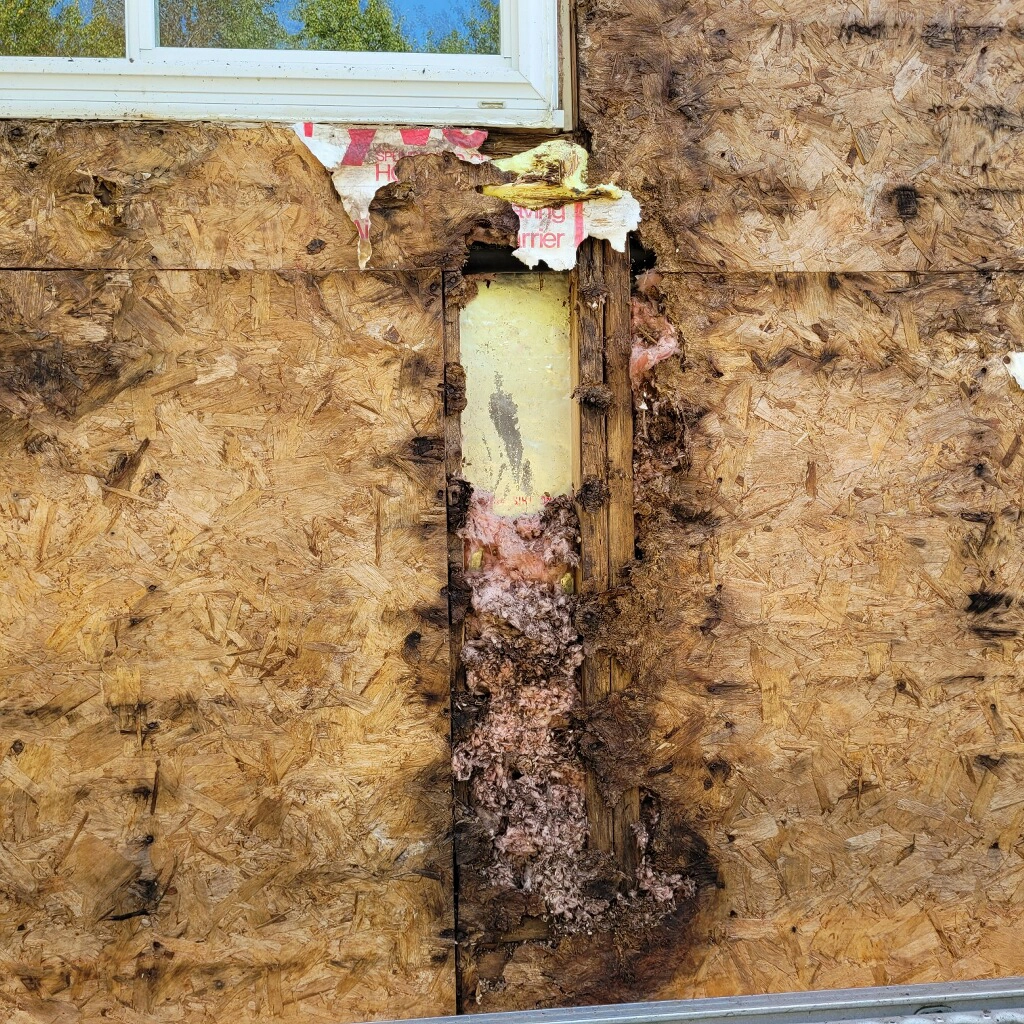
Water damage is the silent specter that sneaks into the timbers of your homes, degrading structural integrity, destroying insulation R value, and opening the door to insects and vermin. Here in Connecticut the variation in temperatures and moisture that the seasons bring places a tremendous amount of stress on siding and sheathing, and if both are not done correctly from the start there will absolutely be issues down the road. We always rip old siding before starting new for this very reason – it is not only irresponsible, but dangerous to go over old siding due to the unknowns involved.
Sheathing Rot
Sometimes we remove old siding and find water damage has gotten into the sheathing. When we’re lucky, this is where the damage stops. Sheathing water damage can be spotted pretty quickly, as the plywood will have a swollen, disfigured and often mold covered outline in the area that is frequently being saturated by water intrusion.
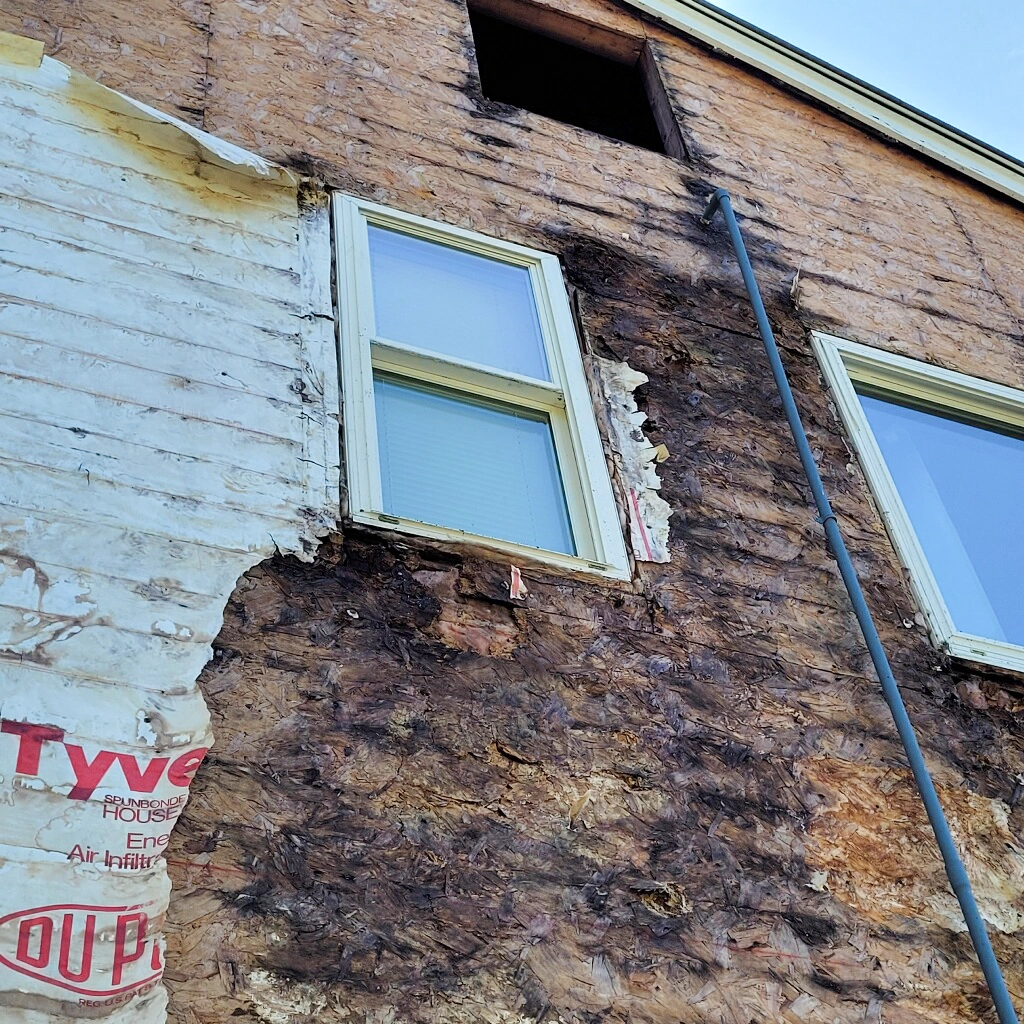
Sheathing rot is a major issue to catch early on, because once sheathing is starting to take on water, it’s only one winter away from failing and allowing water into the framing. This happens because water does something that not many other chemicals do when it freezes – it expands. Sheathing that is soaked with water in the fall will inevitably expand aggressively during the winter freezes, which will rapidly destroy the sheathing, as the dry sheathing will contract while the saturated portion expands. This mechanical effect of contraction vs expansion will cause the area that is soaked to tear away from the sheet, weakening the rest of the fibers and making the damaged area more porous, and often even weak enough to be broken with a finger. Once that damage is done, there is no stabilizing it or repairing that water rotted section, and it becomes necessary to replace it in order to restore the strength of the damaged area.
Pests and Termites
Some homeowners have rightly asked “is it such a big deal if there is water damage just to the sheathing? If we cover it with new waterproof siding and it dries out, what’s the harm in letting it sit if the water is not going to make it to that spot again?” While the question is valid, the reason that we insist on the repair is that it stops vermin, insects and fungi from targeting that weak spot in your home’s armor. Even if the damage is covered with a water tight new skin, the water damage will still be sought out by pests like termites, carpenter bees and mice as either a building materials source for nests, or as a weak point to establish openings and hives. Siding is designed to manage water and defend against it as gravity pulls it towards the earth, but is also designed to have airflow to allow humidity to escape the house – this means that while it may be water tight, there will still be ventilation that pests can scope out and reach the rotted areas through, making it crucial to thwart there efforts to gain access at the sheathing level.
Framing Rot
In the event that water damage to the sheathing is not mitigated in a timely fashion, water will inevitably find its way into the framing of the home causing the same kind of degradation that it causes in the sheathing. By this point though, the damage to the home is more extreme and requires adaptive interventions. Once water rot has gotten into the framing, it destroys the R factor of the fiberglass insulation in the surrounding area and compromises the load bearing capacity of the studs that have been damage and any insulation value that might be argued is improved by going over existing siding is completely moot if there is water damage opening invisible holes in your insulation.
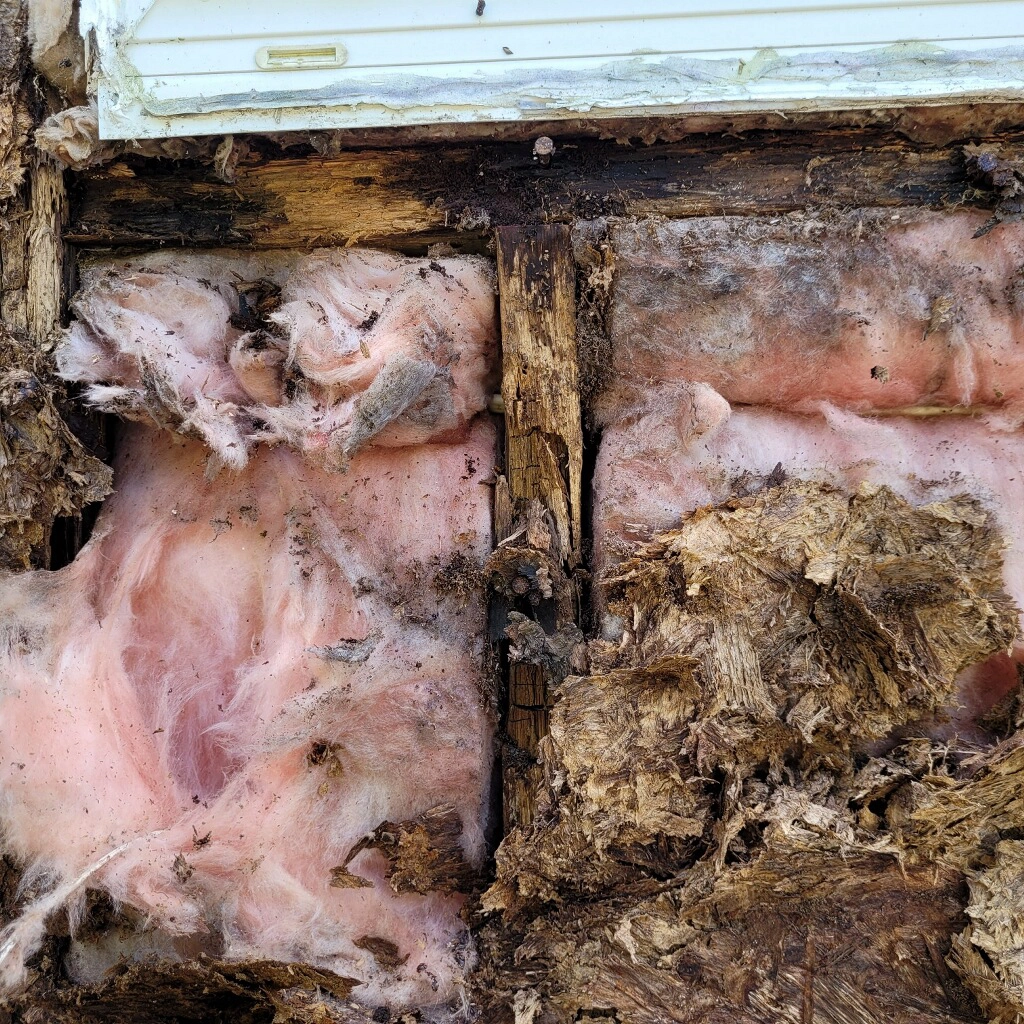
In addition to that, it also saturates and softens the studs enough that they can become a breeding ground and host location for carpenter bees and termites to set up a base of operations which they can expand into the framing around it. When we find this level of water rot in a home, we remove the sheathing around the damage back past where it is dry, replace the affected studs, re-insulate the bays in the damaged regions and attach new sheathing to the new studs to ensure a clean and correct canvas for our siding artists to work with.
The unfortunate truth of the matter
We remove the old siding on every single house we do, and we do it because it’s how you’re supposed to do it. There are some people out there willing to skip this step, but It’s the only industry I’ve seen where due diligence and preparation are the corners being cut on a regular basis. Anyone who is willing to apply siding over existing siding without stripping the house down to the sheathing is realistically
- not doing you any favors and is gambling with your homes value and safety
- is not going to give you as beautiful a finish as new siding directly onto solid dry and correct sheathing
- is going to cause your windows and doors to be at a greater risk of water damage and a bad finish because the siding is now sitting on about 1 inch of old siding giving the windows and door a sunk-in appearance.
Some contractors will be amenable to going over existing siding with new siding at a customer’s request, citing that it is a common practice, but it’s just not the right way to do it. This is your house we’re talking about – your investment, your castle – You want it to be solid and safe from foundation to rafters. The money you might save asking someone to go over your existing siding with new siding would be dwarfed by the headache and cost of correcting structural water damage or termites down the road.
Don’t get us wrong, we would love nothing more than to pull the old siding off and find that your house is clean and dry with no water damage or pests, and we can just work our magic and zip the house up in a beautiful new raincoat, but the reality is that in the state of Connecticut, the elements frequently have found a way into the house, and we all end up glad that we did the project the right way and caught it.

